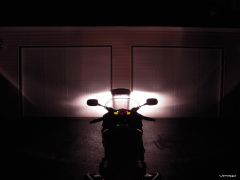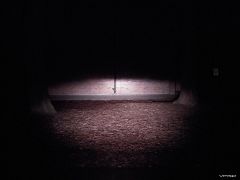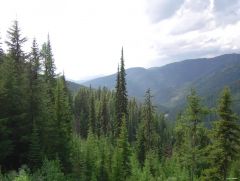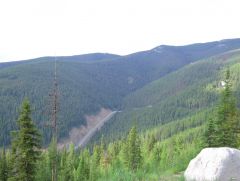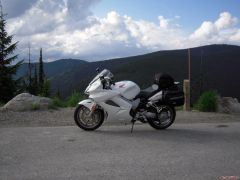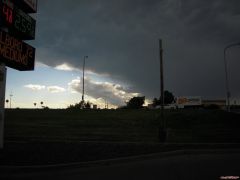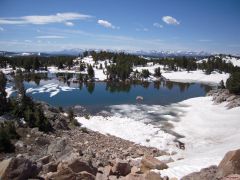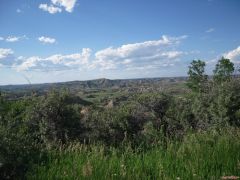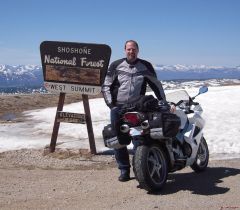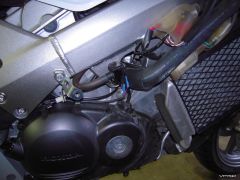-
Posts
543 -
Joined
-
Last visited
-
Days Won
2
Content Type
Forums
Profiles
Gallery
Blogs
Downloads
Events
Everything posted by coderighter
-
From the album: HID's
© ©vfdiscussion.com
-
From the album: HID's
© ©vfdiscussion.com
-
Last night I swapped my lights back to stock and took some pic's. Today, I'm putting the HIDs back in. Tonight I'll retake pics with the HIDs in the same matter and post the results tomorrow.
-
Jon (Coderighter) and I are finalizing the total setup...price will depend on any additional changes that need to be made...but I would Ballpark ~ $125 for the kit. US shipping would be free, Canada gets to pay an upcharge (lucky you!) I was expecting it to be in the $250 - $350 range so if you can hit the $125 mark that would be awesome. Shipping to Canada isn't that expensive for small parcels, it just takes awhile longer - and using US Postal service is the best way to go to help us Canucks avoid paying duty/customs. One more question - I'd like to see the output of the lights with the bike on level ground, in the pitch dark, pointing at a dark wall. That would show the light pattern, and if you showed the bike from a distance to the wall - it'll show the spread of the light pattern. Looking forward to this mod!! Well, I live in a very dark area (county) but I have white garage doors and a pretty steep driveway. My neighbor has a dark brown garage doors and less of an angle to his driveway. I could probably arrange something with him this weekend since I live pretty far north (Seattle area) and it doesn't truly get dark here, this time of year, until 10:30. I'll also go for a ride after dark Friday and Saturday and see if I can't find something real level. I get up for work at 5:00, in the office by 6:15, so I can't swing it during the week.
-
Shouldn't be a problem but before I answer 100%, you say when you flip them on in 'daylight', what determines 'daylight'. How do you stop them from flashing at night if you just want plain old high beams? it has a simply light sensor so it flashes during the day and is off and therefore allows hi beam opps at night. if i remember correctly, it simply plugged on the back of ONE of the high beams and when power is applied ot it, if the sensor sees daylight, then it modulates power. if dark, then it simply allows power through like normal. pretty simple. sounds like this shouldnt impact your deal any. Yep, not a problem. Should work just fine.
-
I second on both accounts. September 2007 (age 40), things just didn't seems right 'back there'. I went in to see the doc, who in turn, sent me in for a colonoscopy. It turns out I was hiding a baseball size tumor in my colon. I was scheduled for immediate surgery, a colon resection. They removed 10 inches of my colon and stapled, yes, stapled it back together. Thou the odds of this are pretty small with a tumor that size in the colon, it turned out to be non-cancerous! Because of the size and location, they had to do the surgery old school, cut-n-gut. It was very painful and had me on a morphin drip for 5 days. If I'd just gone in for that colonoscopy earlier, the hole thing (pardon the pun) would have gone a lot easier. Bent is right, the meds they give for the colonoscopy are OUTSTANDING! Not only are you the happiest guy on the plant, but the have a great side effect of complete memory loss for a hour or two. Last year on my trip to North Dakota, I went on Thompson Pass. Outstanding ride. I'm guessing it was 30-40 miles and I only saw one car and a couple guys on top with duel sports of some kind. If your heading east, going down the Montana side there's a long down hill straight posted 70 mph, at the end is a unmarked decreasing radius 30 mph 120 degree turn, be careful. DSCN0472.JPG Thompson pass.jpg DSCN0473.JPG
-
From the album: Trip
© ©vfdiscussion.com
-
From the album: Trip
© ©vfdiscussion.com
-
Shouldn't be a problem but before I answer 100%, you say when you flip them on in 'daylight', what determines 'daylight'. How do you stop them from flashing at night if you just want plain old high beams?
-
Actually, high beam circuit is unchanged, so if for some reason you need lights and the engine is not running, you can simply turn the key 'on' and hit the high beams. The typical life of a HID bulb is about 10 times that of a halogen. However, that bulb life is shorten by power cycling when the bike is started. This is not only hard on the bulb but the ballast also. The HID doesn't have a filament (which is the main reason for the long life), it's a tube that is filled with gas and has two electrodes When the light is powered, the ballast has to produce a 20,000 volt (typical) arc across the to electrodes to 'fire' the bulb. After the bulb is lite, the voltage is reduced as it warms, until it settles out around 80 volts. Repeated 'firing' of the bulb doesn't give the bulb or ballast a chance to recover from the previous start up. This is the reason for the custom relay in the kit that doesn't activate until the engine starts, it prevents this unnecessary on-off cycling.
-
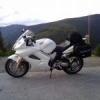
Fan Switch Temperature Options
coderighter replied to mello dude's question in Modification Questions
Also, don't forget that this 80% figure quoted at this website is using their own fan spinning BACKWARDS to convert from a tractor to a pusher by reversing flow without changing the blade pitch. Switching to the VTR fan changes the blade pitch to one that was designed to be a pusher. Does the VTR suffer from a heat issue? Perhaps there is something to the lean-running effecting the hot-running issue. But since I've personally had no more overheating issues with the fan swap I'm going to consider the problem fixed on my bike, and after a full season of it being fixed I'll just forget about the fan, the worry about overheating in traffic, and just get on with my life. If people want to put in a bunch of cobbled-up switches and mess around trying to think FOR the cooling system rather than just fixing it once and for all and then being able to ignore it like any properly-designed vehicle where it just WORKS, then more power to them. Me, I've found my solution. I thank you for showing it to me and convincing me to try it. It was one of the easiest mods I've ever done to the bike as well as one of the cheapest. So far it's just fixed the problem. I'm sick of fighting the nay-sayers who say it's not going to work. It does. That's incorrect, Perma-Cool has both push and pull fan designs, as do most manufactures. The reason a puller is more efficient than a pusher is physics, not lack of ability to design a proper fan blade. 'Pullers' are always better at air (flow) management than a 'Pusher' would be. Creating a low pressure cell behind the fan will make any air out front want to rush into the radiator and fill in the low pressure area. A 'pusher' creates a high pressure cell in front of the radiator and that high pressure will leak out everywhere it gets a chance to. Much of the air will leak out the sides and not go through the radiator. Pushing air tends to disburse it (everywhere). Pulling air tends to gather and focus the air flow. Proper ducting on a pushing fan will help force more of the 'disbursed' air through the radiator, as JES_VFR mentioned. The stock fan frame on the VFR doesn't have the ducting to improve the efficiency of a pusher fan. By installing a pusher fan on the VFR, you will decrease airflow through the radiator, at least while the bike is standing still. The VTR fan works for you because your cooling problem is slow moving stop and go traffic, not long multiple stop lights. At low speed traffic, your improvement is as much to do with not having the stock fan working against airflow, as it is have the VTR fan working for you. In the end, if it works for your situation, great, more power to you. -
Any time you disconnect any plug on this bike, hit it with this...... http://www.radioshack.com/product/index.jsp?productId=2104746&CAWELAID=107597316 .....before reconnecting. You can find it at almost any electronics store. I just linked the shack because almost every town has one.
-

Fan Switch Temperature Options
coderighter replied to mello dude's question in Modification Questions
Well, I think your right about the lean points and what it takes to really fix the tune. I've still got to install autotune on my bike. Look forward to hearing the results. :blush: -

Fan Switch Temperature Options
coderighter replied to mello dude's question in Modification Questions
Strange, sitting at a long light, if the bike gets to 220, the fan kicks on. The temps immediately start to drop. With in a minute or two the temp hits 210 the fan turns off. I never have a problem stopped. The highest temp I've ever seen stopped is 221 and that was a 100+ degree day in eastern Washington. I'm not sure why you had such a issue with yours. The only time I have problem is if the light turn green while the fan is still running. I've never experienced the hideous heat vortex of which you speak. However bear in mind if the fan not running, the R/R could be dumping more current, making the frame hotter. It sounds like your fan runs alot more than mine. By turning fan into a pusher, you lower the efficiency of the fan by 20%, even with the correct fan blades. http://www.perma-cool.com/Catalog/Cat_page16.html Not only are you pushing hot air across the radiator, you're also pushing about 20% less CFM. I know that a pusher fan is less efficient than a tractor fan, unless is it's total surface is larger than the total surface of the radiator its has a complete shrouding duct. But the simple facts are these. when I had the stock fan blade and I came to a stop on a day like today (the high at 12:45 was 90f out in the open, the heat in traffic was 96f on the cars outside thermometer, and with 55% humidity the heat index was 112.). Temp would rise to 224 and the fan would kick on, and in 2 or 3 minutes it would have cooled down to 213-214 and the fan would shut off. As soon as the temperature would shut off the temp would start climbing again and in two minutes or so would be right back to 224. The fan would kick on for 5 or 6 minutes this time before it could get the temp down to 213-214 and cycle off. In about a minute (maybe minute and half) the temp would be back to 223 and fan would again come on. From here on the fan would run continuously (with the temp never really coming down), until either I got the bike moving at 30+ mph and clear of the traffic -or- it when past 238, at which point I'd shut off the damn thing, paddle foot it to the side of the road and wait for it to cool off (usually just in time to see the traffic jam start to move). But since I put the VTR fan on the bike, I never have this problem. Coolant temp gets to 223, fan kicks on. temp starts to drop. A couple of minutes go by temp drips to 213, fan kicks off. Minutes go by and temp creeps back up to 223, fan kicks on again, temp drops to 213 in a few minutes and fan cycles off. This cycle will repeat for at least half an hour without the temp climbing above 223 or the fan reaching a state where it can't cool enough to cycle on/off. The on cycles don't appreciatively longer unless the ambient temp also rising (like when you are sitting in that concrete canyon called Vine st in Philly in the noon day sun, where the outside temperature climbs as you watch!) so I'd say that in practice the superhawk fan is much more effective than the stock fan ever was. Tractor vs pusher fan, drawing air through the bike or not, It just plain works a world better in that concrete oven than the oem fan ever did. I've seen lots of post describing the same behavior from lots of people on the other VFR Lists so I know it is not just me and my VFR. In fact one of the big disappointments was that Honda supposedly fixed the heating issues with the Vtec editions, yet all through the summer's of 2002 and 2003 there were people complaining about their near meltdowns in high heat and traffic. I'm sorry Jon, but to me these people that have had issues and those that are just concerned with it now can't all be sniffing vapors, there is a problem with the fan when the bike is standing still. I don't care if you fill your system with "Pink" or 'limeade", that oem fan is not going to keep the bike down to reasonable temperatures for long when you meet the right conditions. Now I'm not saying that the superhawk fan blade is the ultimate solution to having the VFR keep it's cool. I'm just saying that it does a damn sight better than the crap design from Honda. That it is Honda part (so its not some unobtainium part from some rocket manufacturer). Its simple to try and in the end very cost effective. I haven't heard of anyone saying that it did not work better than the stock fan. I had the same problem with my RC51, cooking off in the heat from the day I got it. God I wish the solution had been as easy as just swapping a couple of VTR fan blades. In the end, I flipped the stock fan blades over with a little work and reversed the motors, all to try and get close to an efficient pusher fan operation. Even with all the flaws (not a pusher fan blade design, not ducted, drawing air from around the motor and header, less efficient as a pusher over a tractor fan, etc..), again the fans work, the bike doesn't overheat anymore and flatten the battery. I know that when time and funds allow I'll be back to this with carbon fiber ducts, spal fans and some sort of variable fan control system. Come to think of it I'll probably be at the VFR first with these things or at least some other heat management measures. Honda did us a major dis-service with both these bikes as neither one has an excess of cooling "power" built into it. Both want to run hot as per external laws, but they certainly need some system improvements. Jon, I'd bet you that if you tried the superhawk fan, you would suddenly realize that you don't need the control module to switch off the fan when you get moving. I do believe that with the VTR fan, you've seen improvement in your case. I believe the improvement is slow moving stop and go traffic, not stoplight to stoplight. As far as the VTR fan cooling better when stopped, I'm not buying it. There have been members who have made the switch and posted that while their stop and go traffic temps went down, their stop light temps increased. We all agree, a pusher fan is only 80% efficient when compared to a puller fan. We also agree that the air in the tunnel is hotter than the air on the side of the bike, I measured a 67 degree difference earlier in this thread. Granted, once the fan starts the temp will come down, but it will never be as cold as the 'fresh' air on the side of the bike. When the bike is stopped, we can safely say the stock fan is the better choice. We all agree that no fan helps above 30 mph(ish). We all agree that running a fan against the flow of air across a radiator is a bad thing. I do see a big benefit to the VTR fan swap in the 10-30mph window. I believe, however, a large portion of the benefit is not so much that the VTR fan itself is aiding in cooling, but that you've removed the stock fan. Once the bike is in motion, the stock fan is fighting air flow caused by bike movement. Replacing the stock fan with the VTR fan just stops that fight. The biggest reason for these bikes running hot, in most cases, is not the fan, but the A/F mixture. From the factory, they are so lean that they just make a ton of heat. Currently, I'm not running a fan control of any kind or a VTR fan, and my bike has no heat problems. Ever since I installed my PCV w/autotune, I've gotten rid of those lean spots and along with those went the high temps. I've found during the last couple rides, that I actually need to change my mapping a little because I'm having a problem with not enough heat. I couldn't get it over 172 on the freeway last Saturday. All this fan talk is really just a band aid for a lean mixture (and too much/wrong antifreeze). If you really want to fix the problem, fix the mixture. Once you fix the mixture, you should be able to run which ever fan makes you feel better. -

Fan Switch Temperature Options
coderighter replied to mello dude's question in Modification Questions
I disagree with your saying that the Stock fan works better than the VTR fan when the bike is standing still. Its does not. My fifth gen would just get warmer and warmer if it was sitting idling in the driveway too long with the stock fan. The fan might actually move enough heat around once or twice to cool the bike enough to cycle off, but it would only do it once or twice, then the fan would run continuously and the bike would just keep heating up. Now the VTR fan kicks in and cycles maybe 17-18 times in a half an hour, but the temp is never above the 223-224 that the fan kicks on at. Yes the fan pulls from in front of the bike and that means that it gets heat off the exhaust and engine before it gets to the rads, but with VTR fan the heat gets pushed out of the bike. A few seconds after the fan has kicked on the temp is coming down and the momentary blast of heat from the left side vent has lessened. The stock fan sucks cool air in through the rad and then dump this heated air the engine bay, the heat doesn't travel anywhere really and just warms the entire bike, in an escalating cycle until the display is flashing to get you attention of the impending overheating. To me that just proves that the Stock fan is a turd. Any you are right no fan that size is going to make a significant contribution to cooling if the bike is traveling faster than 30 mph. But the point is that the stock fan is a poor design even when the bike is stopped. Keeping heat in the bike is not effective cooling. I'd rather spend an extra 15-20 seconds moving preheated air out of the bike, than just continuing to pump the heat around the bike. The absolute best of both worlds would be the pusher vtr fan and ducting that keeps the header and block heated air entirely away from the radiators. But those ducts are a project full of time and money that I don't have right now, maybe someday when I find someone that will, like there are people that will make those ducts for the rc51's. Strange, sitting at a long light, if the bike gets to 220, the fan kicks on. The temps immediately start to drop. With in a minute or two the temp hits 210 the fan turns off. I never have a problem stopped. The highest temp I've ever seen stopped is 221 and that was a 100+ degree day in eastern Washington. I'm not sure why you had such a issue with yours. The only time I have problem is if the light turn green while the fan is still running. I've never experienced the hideous heat vortex of which you speak. However bear in mind if the fan not running, the R/R could be dumping more current, making the frame hotter. It sounds like your fan runs alot more than mine. By turning fan into a pusher, you lower the efficiency of the fan by 20%, even with the correct fan blades. http://www.perma-cool.com/Catalog/Cat_page16.html Not only are you pushing hot air across the radiator, you're also pushing about 20% less CFM. -
Saturday's weather is looking OK...........believe it or not.
-

Fan Switch Temperature Options
coderighter replied to mello dude's question in Modification Questions
Why not just stick in the VTR Fan? http://www.vfrdiscussion.com/forum/index.p...mp;#entry640043 MD Because at a stop light, the VTR fan pulls preheated air from the 'engine compartment' and pushes it through the radiator. You get a much better cooling effect when you take air that's 60-80 degrees cooler from 'outside' the bike and push it through the radiator. The stock fan will cool better at a stop light than a VTR fan. Even people that have done the swap will tell you that the VTR fan doesn't cool as well as the stock fan when the bike is stopped. A VTR fan will cool better when moving for 1 reason, it's pushing air in the same direction as the air flow caused by the bike's forward progress. It's not really that it's adding any air flow, but more important, it's not blocking it by trying to push air the wrong way. In theroy, if the bike never stopped, the fan would never be needed. If you're in Texas on the highway, with the temp greater than fan trip speed, than it's stuck there because the stock fan is 'blocking' the air to the left radiator. If you could turn that fan off, you would again have use of both radiators and the temp would go down. The stock fan works better at a stand still. VTR fan works better moving. No fan, no matter the direction of rotation, is going to help above 30 mph as the air flow caused by the bikes forward progress should, at that point, be greater than that of even the great VTR fan. A fan pushing air against air flow (caused by speeds above 30 mph) will hurt cooling. How much time do you spend between 1-30 mph? If you just stopped the fan, and stopped trying to block air flow above 30 mph, wouldn't you have the best of both worlds? -
I can understand the reasoning behind this but it seems that if you don't have any problem as designed, there should be no need for it. If you do have trouble, there's likely something wrong and then wouldn't this essentially be a band aid? If I understand correctly, there is only a fan on one rad so the other would allow unimpeded airflow at any speed above minimal and with the way the regulator works, it seems it would keep the heat level down on the R/R simply by wasting some of the excess electricity that otherwise must get expelled as heat in the R/R. I agree, it would be a band aid for a design problem. Not everyone has this problem, but some do. It seems people in hot climates, that commute in traffic get stuck in a 'fan loop'. You sit at a light, the bike get hot, the fan turns on. The light turns green you get up to speed, in traffic and because you're 'blocking' airflow with left fan trying to push wind in the wrong direction. Now it's 100 degrees, and you're in traffic with 1 radiator. If the fan wasn't fighting progress, you'd have 2 raditors and the temp might actually come down. If you're 'blocking' the left raditor, makes the air running down the right frame, hotter. The right frame is where the R/R is located. It's my understanding that bike is setup to be 'electrically power neutral' running at 5k rpm with the high beams on. If more power is needed for the fan, brake light and turn signal, it considered temporary, and taken from the battery to be put back later. This is not usually a problem because the fan is normally not on while the high beams are. If your your idling at a light (with no high beams), because of the reduced RPM, you're pretty much 'power neutral'. The R/R is not expelling much, if any, extra heat because the fan is not running. When the fan runs at idle, you're actually borrowing power from the battery. The fan draws about 9 amps or 115 watts which is about the same as having the high beams on. Also consider, if your sitting at a stop light with the brakes on, that's another 42 watts. There was a post recently from a member that killed the battery in heavy traffic, this is how it could happen, especially if your battery is not tip top. Consider the battery as 'reserve power' on most bikes. Full disclosure- I don't use (or have) mine anymore. Once I got the tuning right with my PCV, it's pretty rare that my fan even comes on anymore. I live in the Seattle area where there's normally only a couple days a year in the 90's, pretty mild compared to say, Texas. I don't compute with the VFR. I ride for pleasure only, so I avoid lights and traffic. I figured I didn't really need it anymore and needed the parts for another project (it was Sunday my electronic parts store was closed and my OCD was going full bore).
-
I must have missed the previous post on this. So what does it do? Does it assume you have the stock fan blade? Thanks About a year ago I made a module that killed the power to the fan circuit when the bike speed was over 30 mph. Actually, I made the fan motor reverse rotation but that proved unnecessary overkill. The thought being that when the bike get over a certain speed, the fan becomes not only ineffective, but actually hurts cooling, working against the natural flow of air caused by the bike movement. Also, when the wind blows against the fan, it loads the fan causing the fan motor to draw more current. You're also causing unnecessary wear and tear on the fan motor.
-

Fan Switch Temperature Options
coderighter replied to mello dude's question in Modification Questions
CR, I came to the same conclusion several years back, but lack the wherewithall to pull off what you're doing. I don't know if you're interested in putting another module together, but I'd be interested if you are. thanks, Jim If I could get 5-10 people, I just might. If I do, I'll let you know. -
A couple weeks ago I was doing some taking some voltage measurements, testing for a headlight control device I'm working on and I forgot to reconnect the lights when I got done. Later that day I made a quick run to the store and got pulled over by Johnny-law for no headlight. He didn't give me a ticket, and was actually very nice about it, but he did remind me that I need to have at least one light on at all times. Maybe it would be good to have a duel position rocker and switch the individual bulbs. Have one position single bulb(normal operating), center all off, the other position both bulbs for night operation. Just make sure to use at least a 15 amp switch. If you don't do alot of night riding, the switch could be somewhat hidden. Another idea you could do is change to LED and HID bulbs. HID use about 2/3 the power for 3 times more light and LED use about a 1/10 the power of the stock bulbs. This is what I did. Also, if you can find a way to richen up the mixture a little, the fan will run less. If your fan is stock and it's running above say 30 mph, it's not helping cool since it's trying to pull air in the opposite direction of the air flow created by the bike moving through the air. Because the air is actually working against the fan, the fan is actually drawing more current than normal do to the increased load. At that point the fan is could be a larger load than the lights. A switch for the fan might also be an idea for your problem. Always using some type of battery tender or float charger will help keep your battery at peak and help absorb some of the high demand power cycles.
-
From the album: coderighter
© ©vfdiscussion.com


